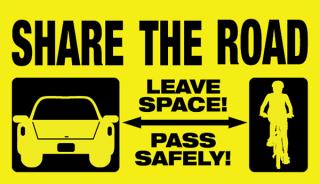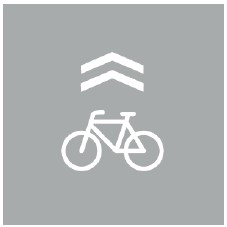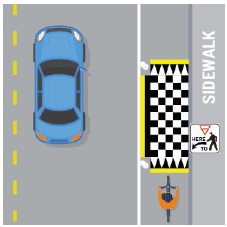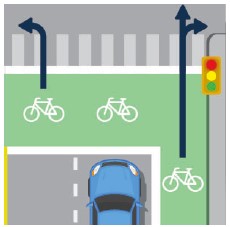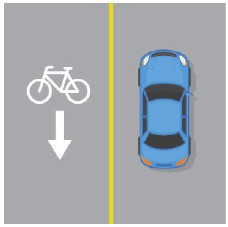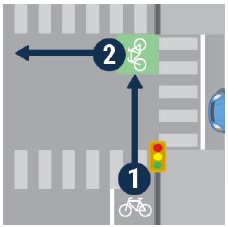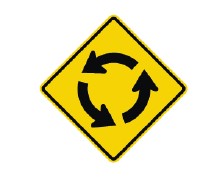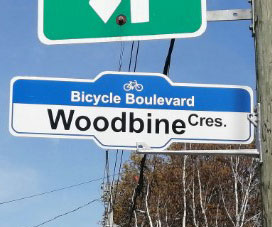Cycling Safety & Education
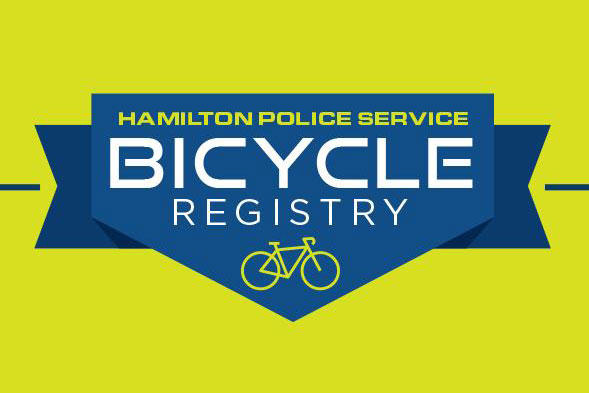
Every year, bicycles are stolen across Hamilton. Register your bike with Hamilton Police - provide the serial number, make and model. Then, if your bike is stolen and we find it, we can easily return it to you!
Hamilton Police Bicycle Registry
If your bicycle is stolen, visit the police station nearest you to file a stolen/lost bicycle report. The Hamilton Police hold unclaimed bicycles for a minimum of 30 days. Unclaimed bicycles are auctioned off through an online service based in Toronto.
Keeping Hamilton roads safe for cyclists is everyone’s responsibility.
Bikes and e-bikes are regulated as vehicles in the Highway Traffic Act, and must obey all traffic laws, signs and signals. Cyclists are entitled to adequate space on the street for their bicycle and are advised to "take the lane" if the lane is too narrow to share with other vehicles side-by-side. Whether you’re a motorist, cyclist or pedestrian, everyone is responsible for making streets safer.
Tips for Riding Safely
- Use a bell or horn to alert people of your presence, particularly when passing on trails. Bikes must be equipped with a bell or horn by law.
- Watch out for parked cars, doors may open suddenly. Leave enough space between the car and your bike to avoid being hit by an opening door - known as ‘dooring’.
- Bikes and e-bikes should have a white front light, and a red light or rear reflector, as well as a white reflector on the front wheel, and a red reflector on the rear wheel. Lights and reflectors are required by law at night or in low-light conditions.
- Know your skill and fitness level when planning routes and plan ahead! The City offers a comprehensive map of cycling facilities which distinguishes between types of infrastructure so you can choose to ride where you feel most comfortable.
- You must be 16 years of age or older to operate an e-bike. More information on e-bikes from Ontario Ministry of Transportation.
Keeping other vulnerable road users safe
- Sidewalks are for not for cyclists. Bikes and e-scooters must be operated in bike lanes, on multi-use paths and on roadways. Sidewalks are reserved for people walking, including those using mobility devices such as wheelchairs.
- Yield to pedestrians on multi-use paths. It isn’t always clear what pedestrians might have physical impairments, including limited hearing or vision. Slow down and give space to pedestrians on multi-use paths.
Hand Signals
Before switching lanes or turning, do a shoulder check for traffic, signal your intention, and check once more before proceeding.
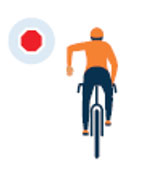
Stop
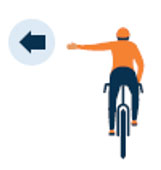
Left Turn
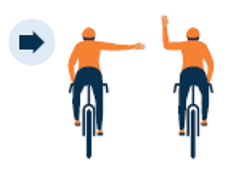
Right Turn (two options)
Helmet Fitting
All riders under the age of 18 are required to wear an approved bike helmet. Helmets must also be worn by all riders when on an e-bike. Wearing a helmet properly can reduce the chance of head injury.
- Two fingers distance above the eyebrows
- Straps form a v-shape under the ears
- One finger space between strap and chin

For Drivers - Tips to help keep people on bikes safe
- Remember to leave 1 metre of space when passing – it’s the law. Leave sufficient space between your vehicle and a person on a bike, and only pass when there is enough room to do so safely. The penalty for not leaving a minimum one-metre passing distance is a fine of $110.
- Reduce speed when you encounter people on bikes.
- When turning left or right, always check your blind spot for people on bikes.
- Always signal when making lane changes or turning so that cyclists can anticipate your actions.
- Look both ways before crossing a bike lane and yield to any oncoming bikes.
- Children may not be fully aware of all the rules and dangers of the road, so drive cautiously around children cycling.
- Never park in or block bike lanes. The penalty for parking in a bike lane is $33.
- After parking on the side of the road, check your blind spots and look for cyclists before opening your door. The penalties for improper opening of a vehicle door can result in a fine of over $300 and three demerit points.
- Check out some of the new infrastructure on this page so you know what to do to keep everyone safe on the roads.
